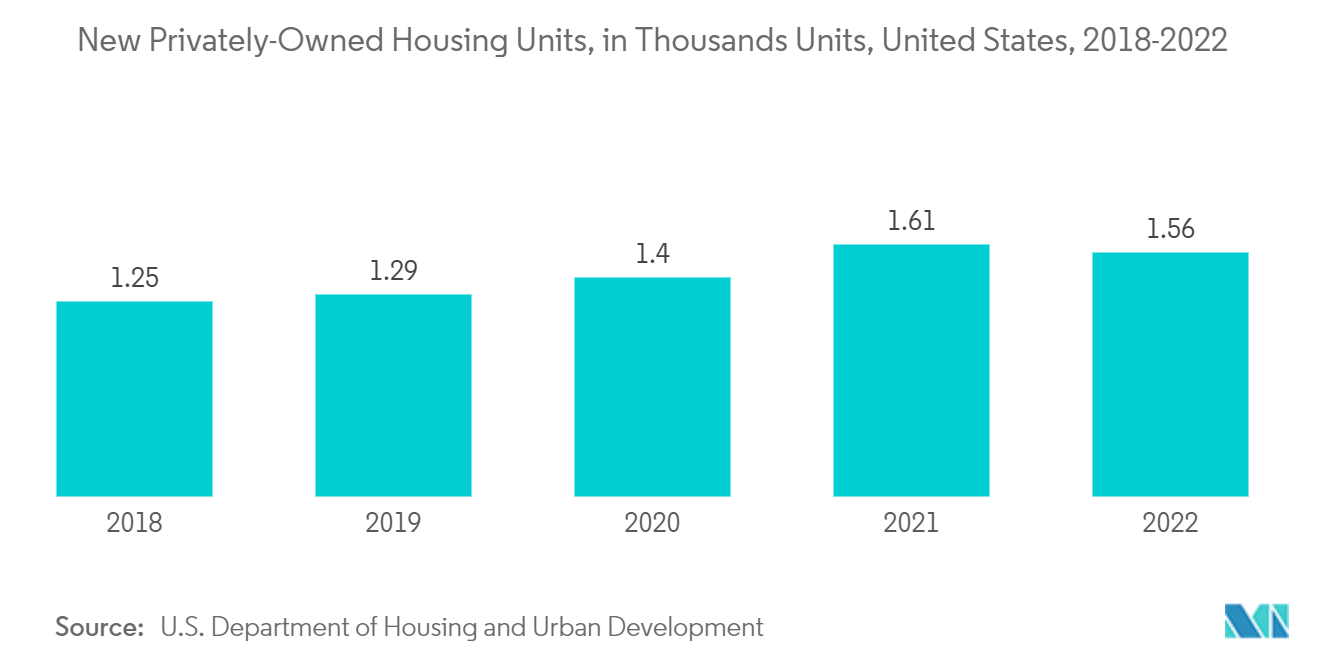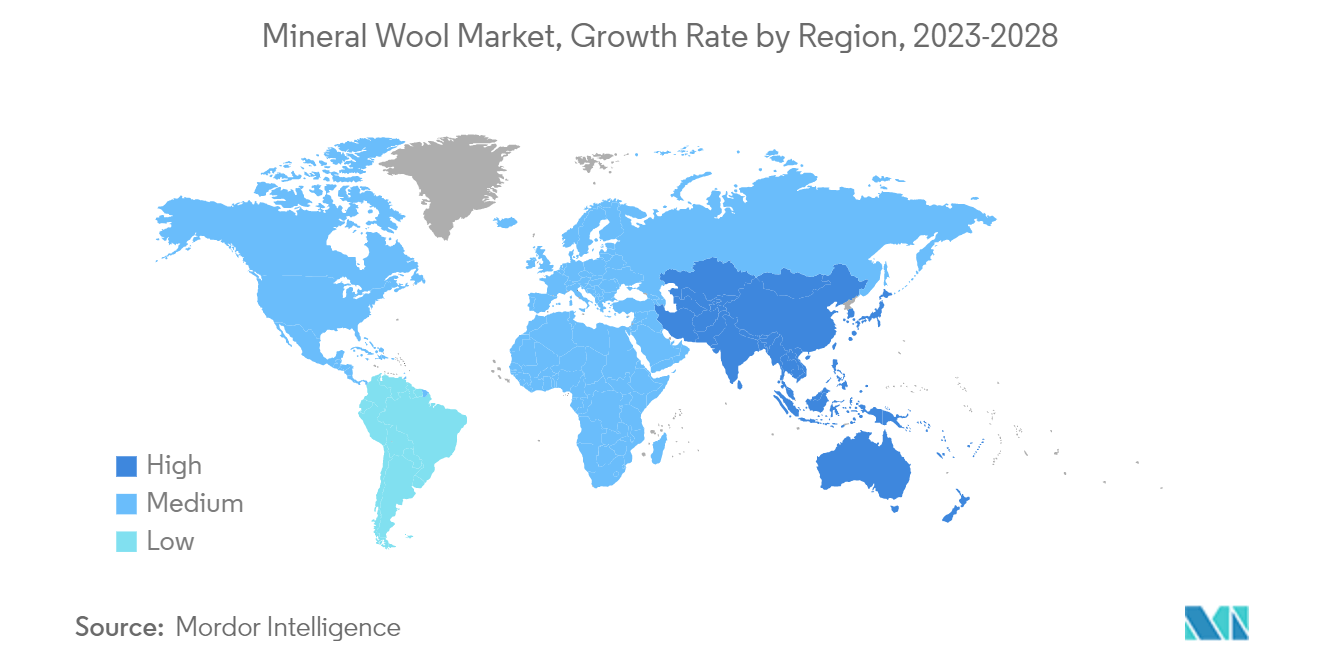Market Trends of Mineral Wool Industry
Growth from the Building and Construction Industry
- Mineral wool is a material that has grown in popularity over the last few decades. Mineral wool is a mixture of stone, molten gas, or industrial waste. It is a flexible and one-of-a-kind product that is often used as insulation.
- Mineral wool insulation is non-combustible, does not conduct heat, and can resist temperatures above 1,000°C, making it an ideal fire-retardant product. Therefore, the material can be used as a covering for ceilings as well as in fire-resistant doors and partition walls.
- The building and construction industry has been growing for the past few years, owing to factors such as increasing population, development of new cities, growing migration in urban areas, renewal of old infrastructure in established cities, and others, and it is expected to reach a revenue of USD 4.4 trillion by 2030. There are 14,200 road and highway construction businesses in the United States as of 2023, an increase of 0.7% from 2022.
- According to the Institution of Civil Engineers, China, India, and the United States are expected to account for almost 60% of all global growth in the construction sector by 2025, thus increasing the market growth of mineral wool in the industry.
- The United States was among the top construction markets globally, and per the United States Census Bureau, in 2021, construction in the United States was valued at USD 1.58 trillion, accounting for around 4.3% of the total GDP of the country.
- In 2021, according to the reports by Rockwool International, the sales of the insulation business increased by 20% year over year to USD 2.44 billion, up from USD 2.03 billion the previous year. The residential sector's increased construction and renovation activity was what drove the sales.
- According to the US Census Bureau, the total privately owned housing units authorized by building permits in December 2021 were 1,873,000, 9.1% more than the revised rate of 1,717,000 in November. Building permits authorized an estimated 1,724,700 housing units in 2021, which was 17.2% more than the 1,471,100 in the previous year.
- Therefore, the growing building and construction industry is expected to fuel the demand for mineral wool globally through the years to come.

Asia-Pacific Region to Dominate the Market
- The Asia-Pacific region held the largest market share in the overall mineral wool market worldwide. The ongoing changes in the construction sector are primarily what drive the market for mineral wool in the area.
- China has the world's largest construction industry. Moreover, with several major construction projects in progress, China is likely to maintain its stature as the world's largest construction industry over the foreseeable future.
- As per the U.S. International Trade Administration, China's construction market is forecasted to grow at an average annual rate of 8.6% until 2030. According to the National Development and Reform Commission (NDRC), China is investing USD 1.43 trillion in major construction projects over the next five years, until 2025. The Shanghai plan includes an investment of USD 38.7 billion in the next three years, whereas Guangzhou signed 16 new infrastructure projects with an investment of USD 8.09 billion.
- In India, the construction development sector and construction activities stood at USD 26.08 billion and USD 24.72 billion, respectively, in March 2021. In 2022, India contributed about USD 640 billion to the construction industry due to government initiatives in infrastructure development and affordable housing, such as housing for all, smart city plans, and others. The growing construction activities in the country are driving the demand for insulation materials in the country, which, in turn, may drive the mineral wool market over the forecast period.
- The Japanese construction industry is expected to be blooming, owing to the events to be hosted in the country. In 2021, Tokyo hosted the Olympics, and the World Expo is to be held in Osaka in 2025, due to which it is expected that there will be an immense growth in the infrastructure development in the country.
- According to the Ministry of Finance of Japan, the construction industry in Japan generated sales of approximately USD 1.22 trillion in the fiscal year 2021, registering an increase of 2.1% as compared to the same period last year.
- Asia is the largest automotive manufacturing hub in the world. The development of electric vehicles is expected to continue to gain momentum in the future, especially in China, where many government programs are promoting the move away from fossil fuels owing to various environmental concerns.
- The Chinese government is planning to have a minimum of 5,000 fuel cell electric vehicles by 2025 and 1 million by 2030. The government's promotion of the use of electric, hybrid, and fuel cell electric vehicles is expected to drive the market studied during the forecast period.
- According to the China Association of Automobile Manufacturers (CAAM), automotive sales in China fell by 8.4% year over year to 2.56 million units in December 2022, whereas they grew to 26.86 million units for the full year 2022.
- Hence, all such factors from various end-user sectors are expected to impact the demand for mineral wool in the region over the forecast period.

